Cottage Furnace

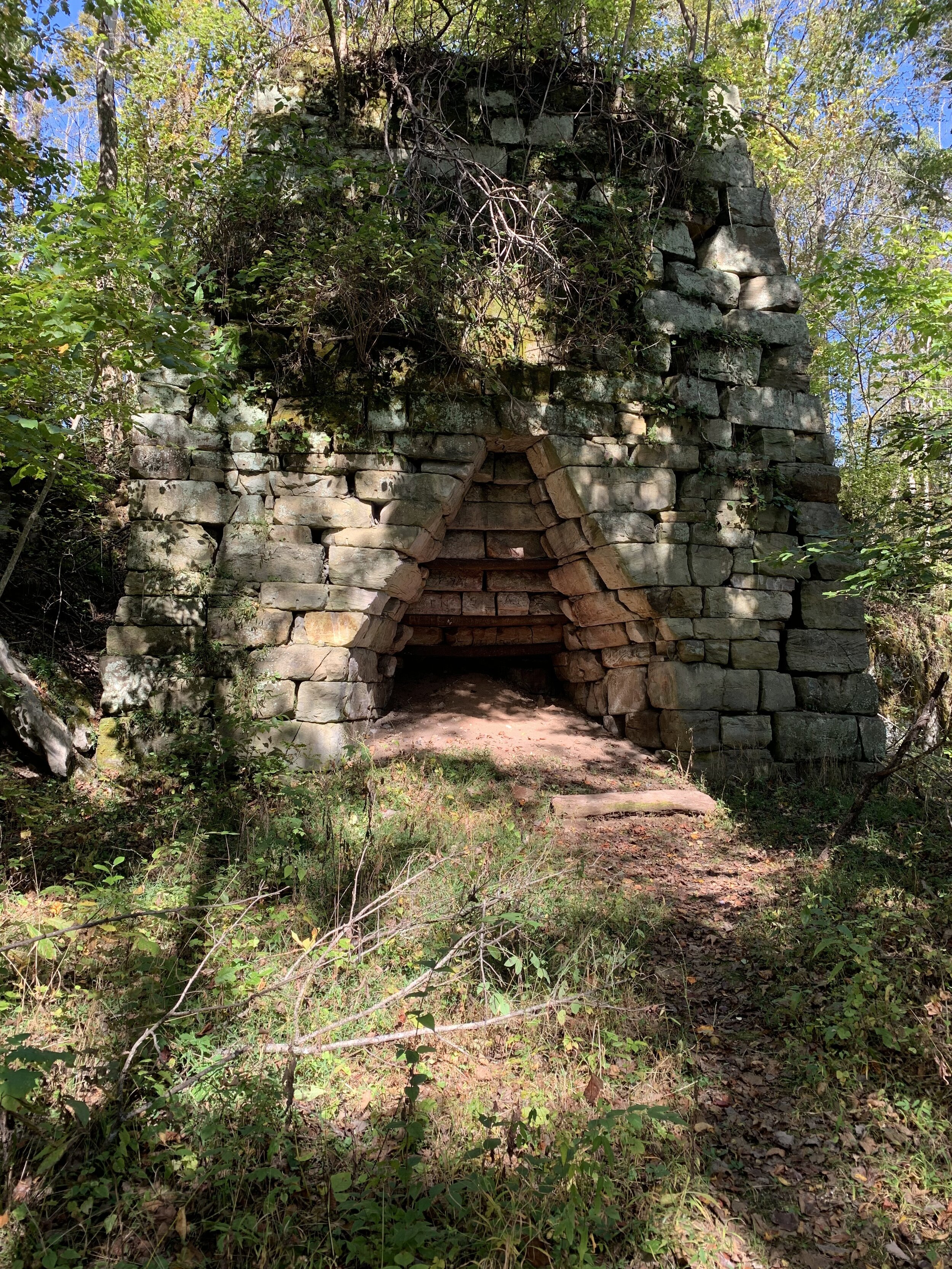
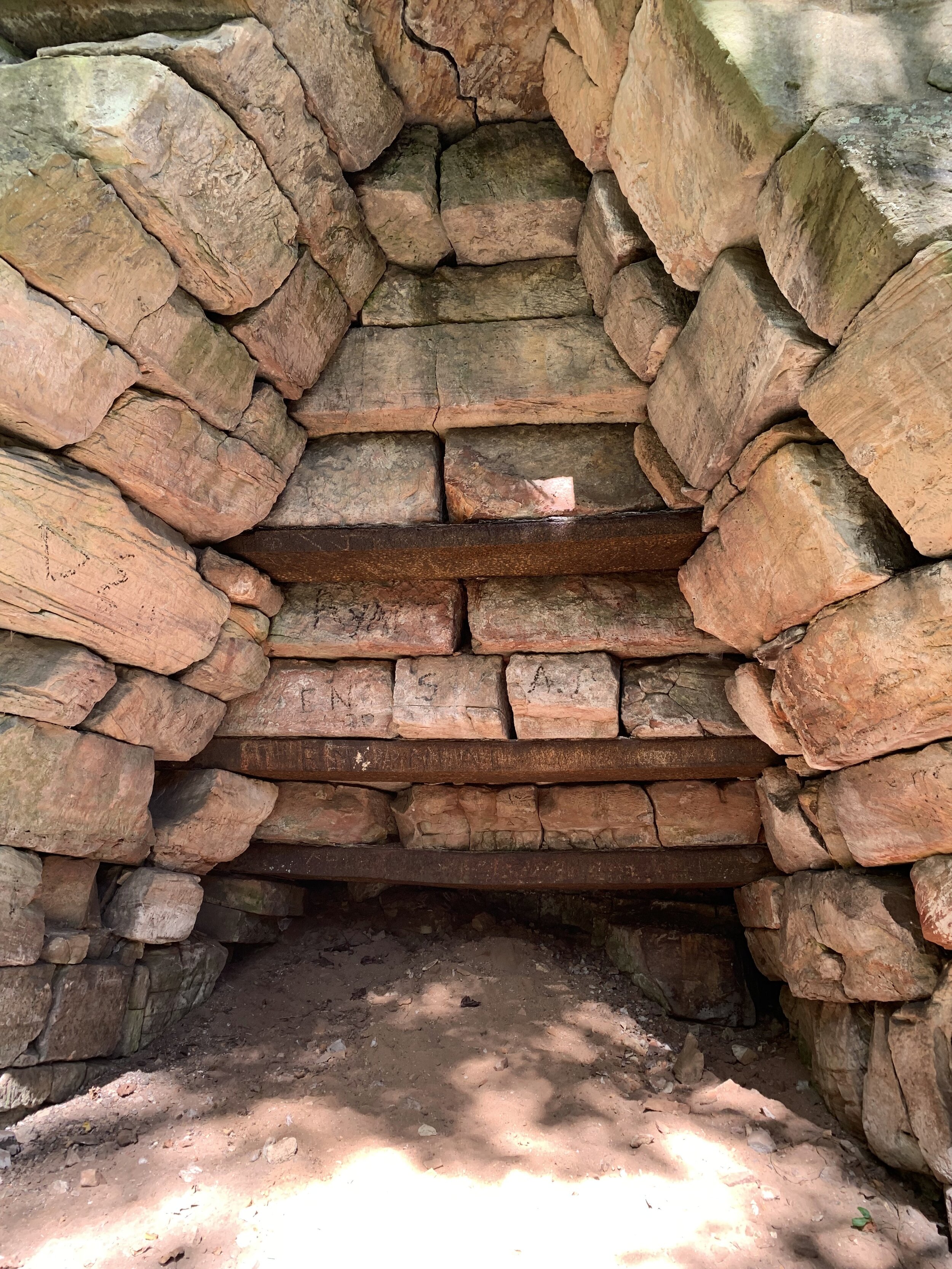
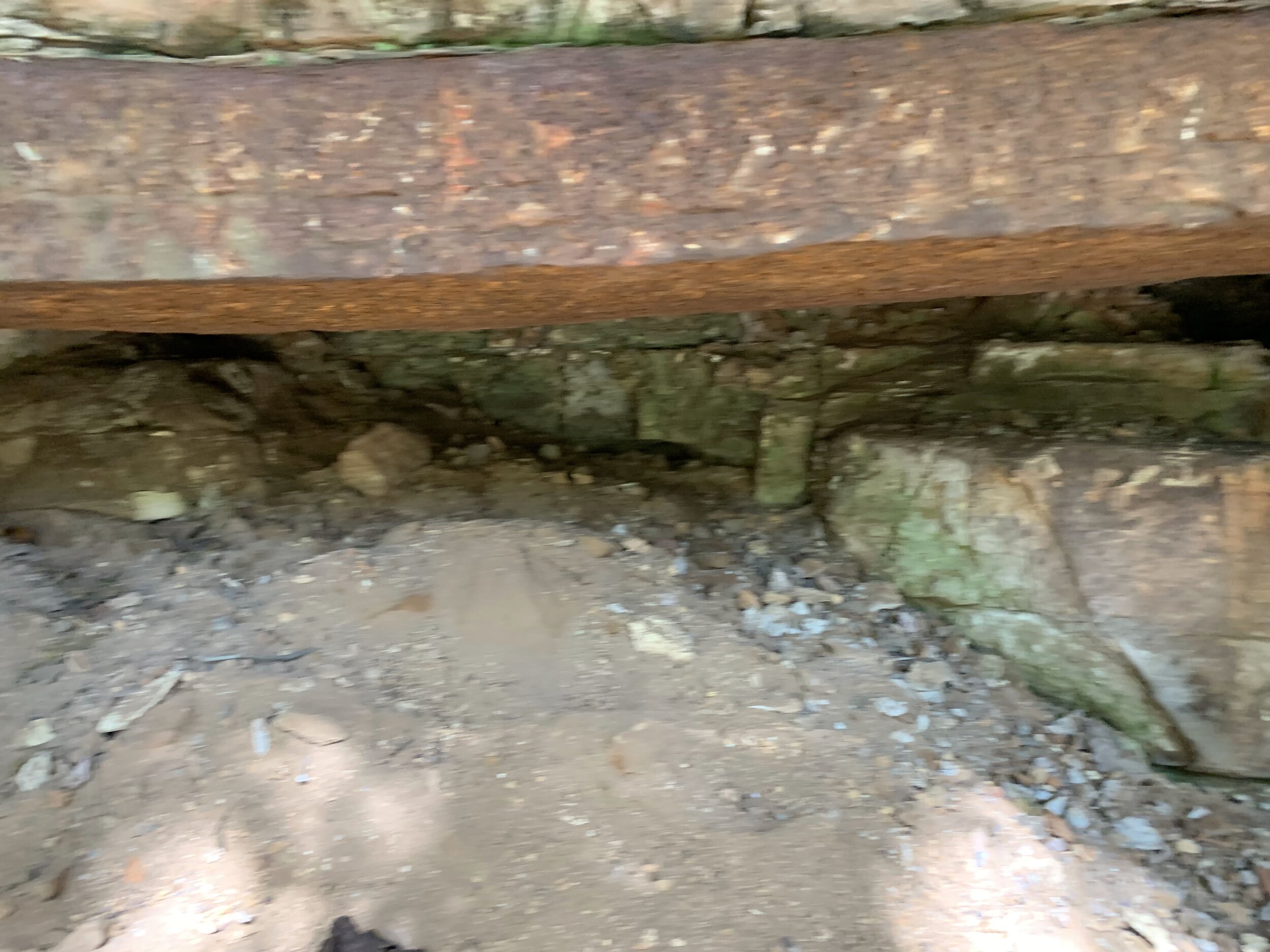
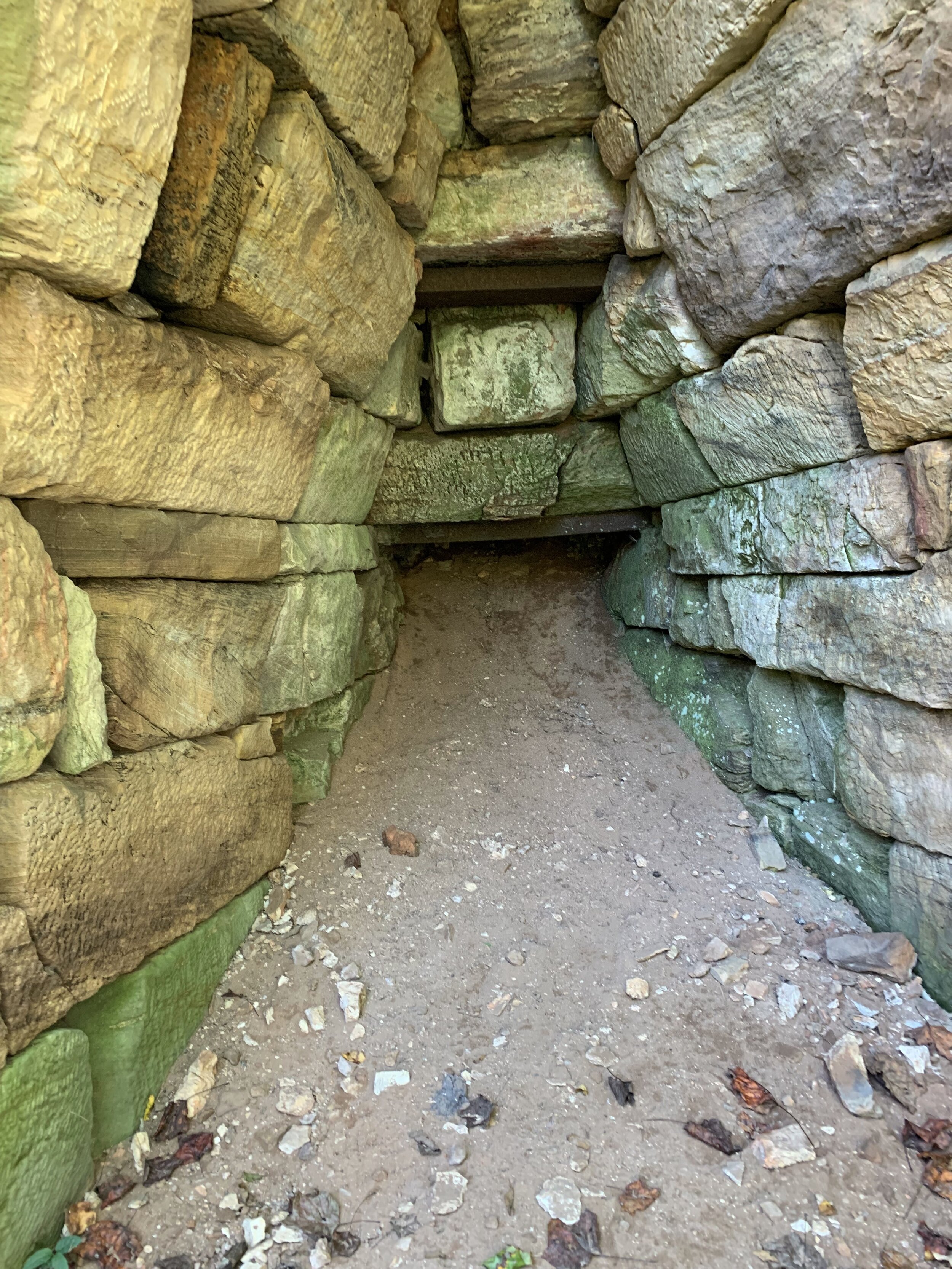

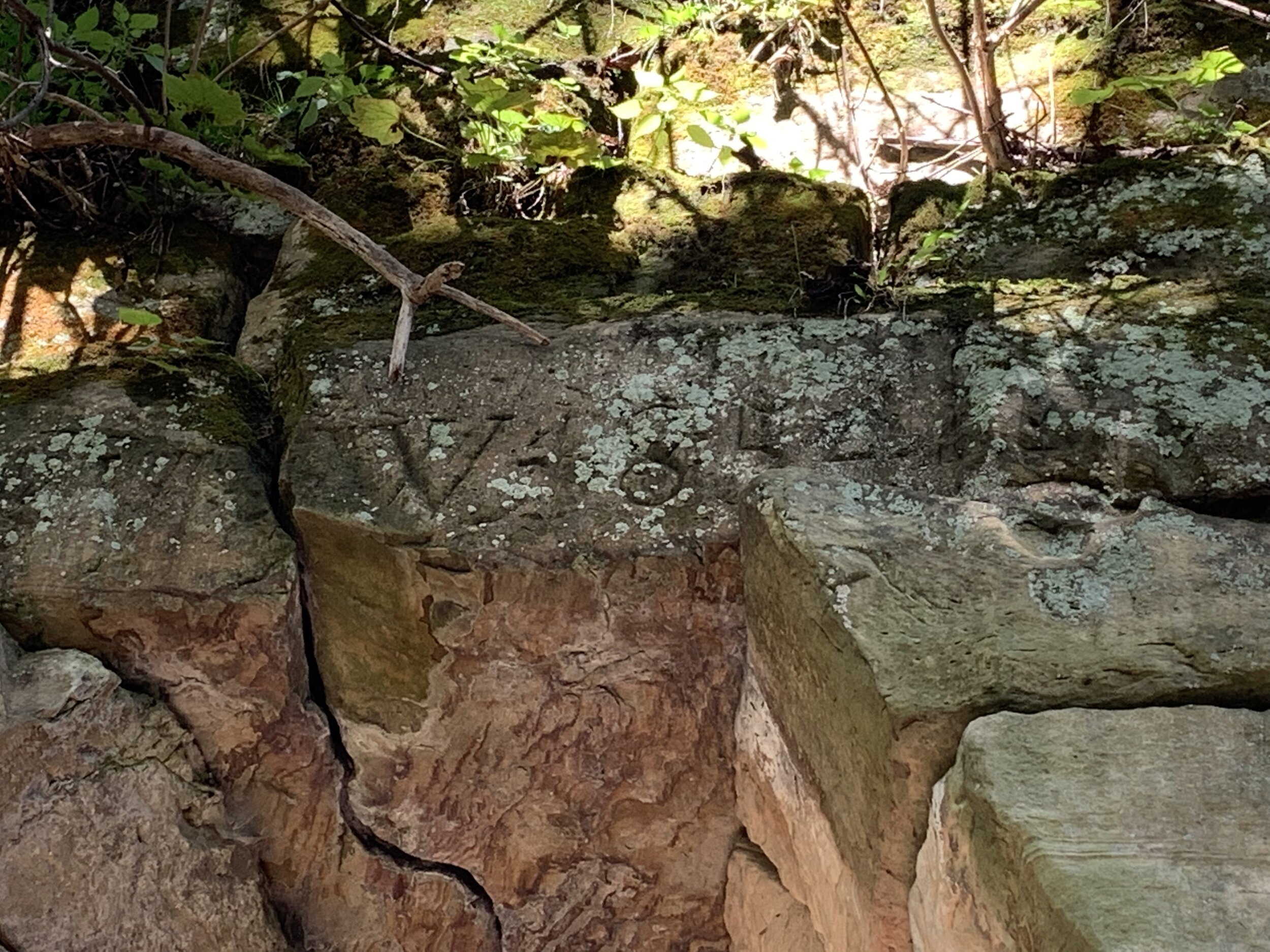
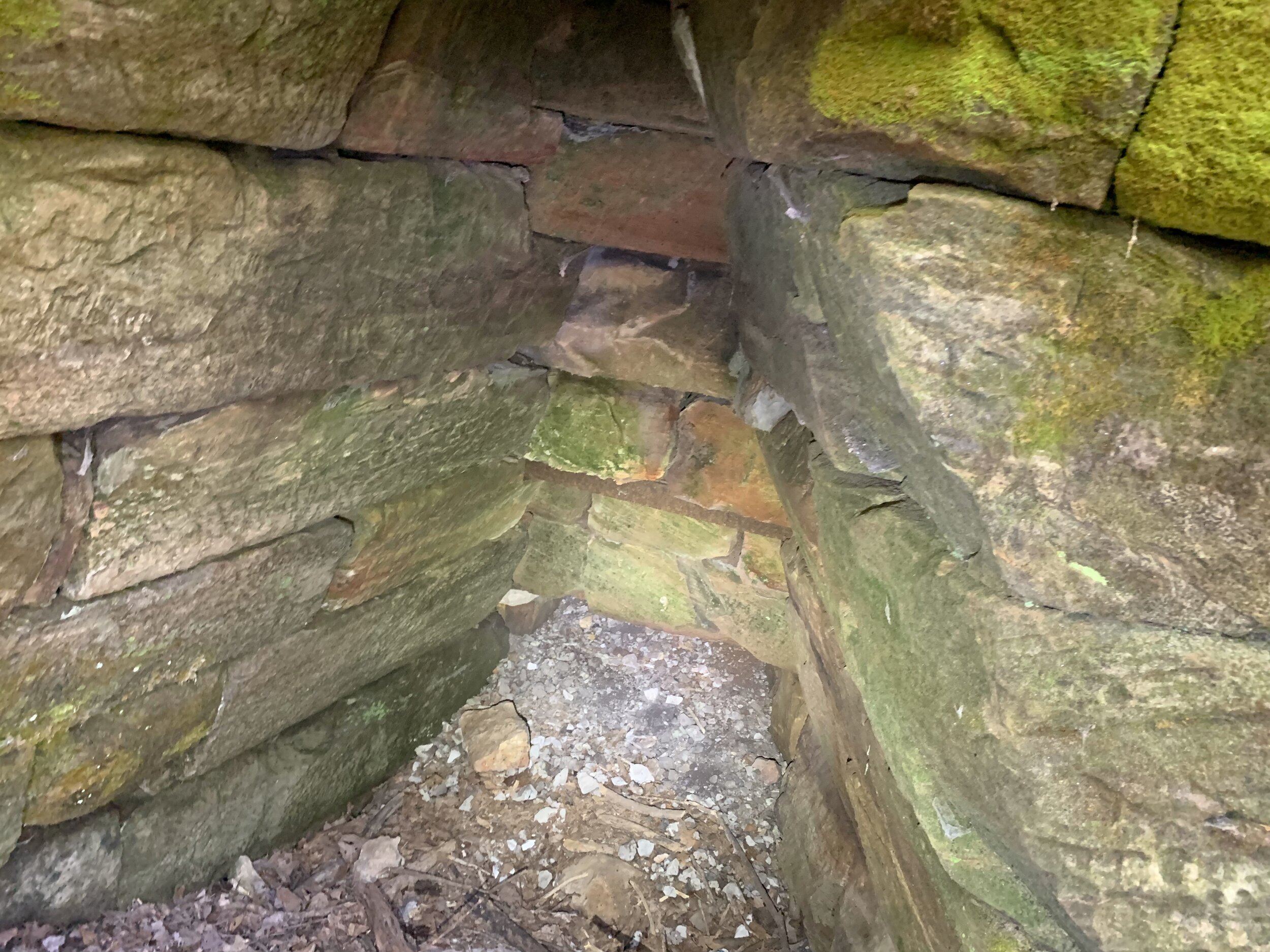
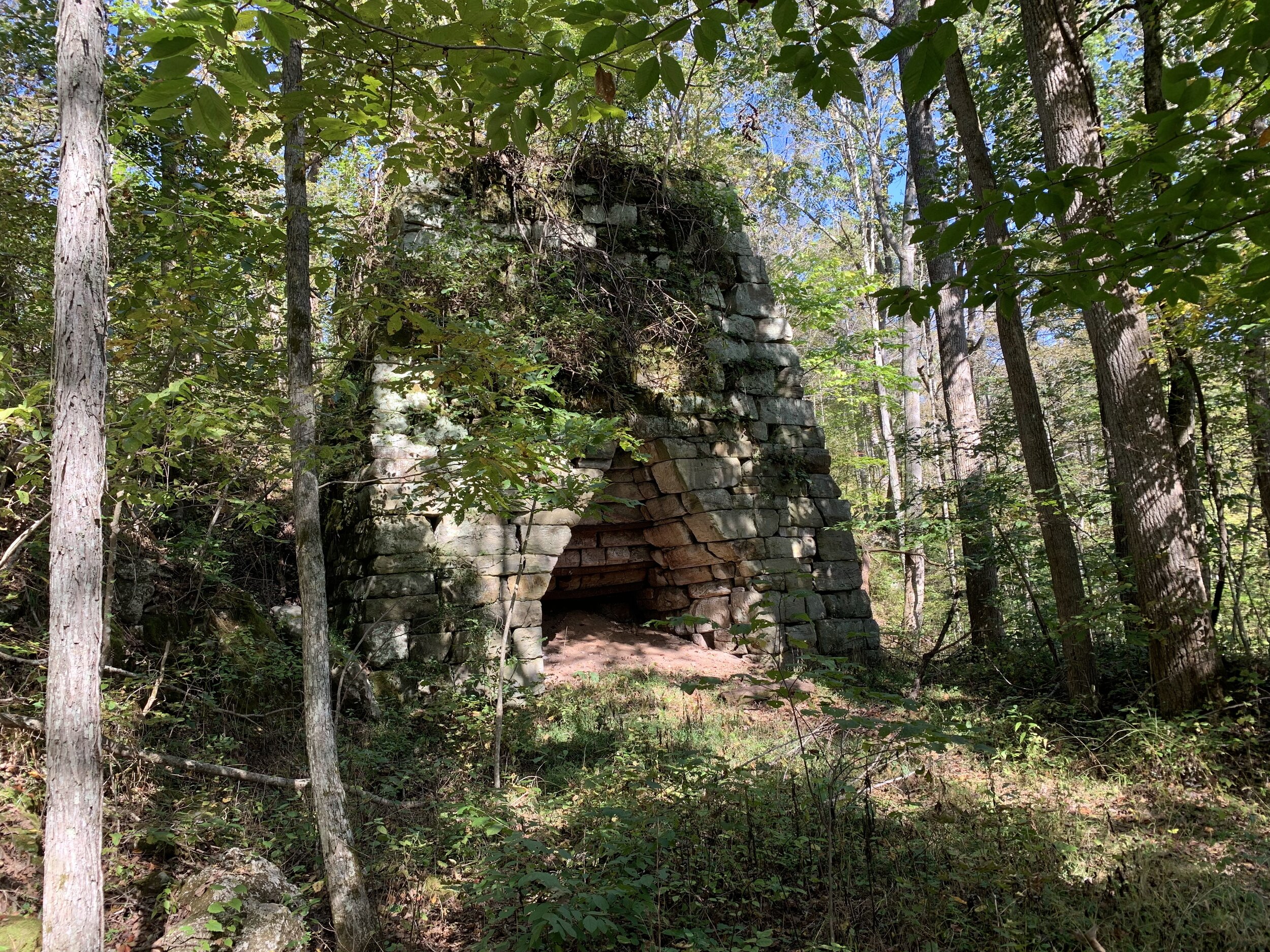
Throughout the 19th century the Bluegrass state was a major producer of the iron used to build an industrialized United States. Men worked brutal hours in local mines to extract the precious iron ore from the Earth, but like many ores the yield of usable iron was relatively small. To avoid having to transport massive quantities of ore across the region’s numerous hills and valleys, large stone furnaces were erected near the mines to process the ore into “pig iron”. These giant towers were built from stone blocks weighing hundreds of pounds each, and designed to hold up against the abuse of heavy industrial work. So when new refining techniques were developed and better quality ore found elsewhere in the country, the furnaces were simply abandoned to the elements rather than torn down. Today many of these monuments to a dead industry still litter hillsides in remote areas of the state.
Just off Route 213 along the border of Powell and Estill counties stands the remains of the “Cottage Furnace”. Erected in 1856 and operating until 1879, it was the first “hot blast” furnace in the area. At its peak the furnace is said to have produced 725 tons of iron in a mere 18 weeks. It stands as the namesake for the region, as the are is known to this day as “Furnace Mountain”. Although most furnaces in the area were abandoned as the local industry died and “pig iron” proved less profitable, this particular furnace owes its end to a much more tragic event. The owner of the furnace received news of his beloved son’s death during a production run, and ordered the immediate ceasing of all activity. As the hot batch of molten iron was allowed to cool the inner workings of the furnace became a solid core that could not be melted down again.
To reach the furnace you can take the Bert T. Combs Mountain Parkway to the Stanton exit, and then head south along Route 213 before turning right onto Marbleyard Road. You will eventually come to a small turnoff with a locked gate. From here you’ll have to park and walk a little shy of a mile down a well maintained gravel drive. At the end of this drive is a beautiful little picnic area, with no sign of the furnace. The picnic area is a loop, and to find the furnace simply check the far-left side of the loop coming from the driveway. You’ll find an obvious little trail head, and the furnace is maybe 75 feet down this trail. You’ll see the backside of the furnace first, and because it sits on a hill it will look fairly short. The train then loops around and down, dropping you off in front of this long forgotten giant.
As you approach the furnace you’ll be facing its front. At some point iron bars have been added to help shore up the entrance, but owing to its solid iron core you will not be able to see much or get very far into it. You can head to the left and scramble up the left side of the furnace to see an additional entrance, or go right and gain access to a tight little trail that will take you to the backside where there is a small opening where additional parts of the furnace would have once stood. The most remarkable feature of this furnace though is the smell. That long solidified iron core has spent almost 150 years exposed to the elements, and the smell of rust is very strong, particularly along the back side.
The Cottage Furnace is a neat little slice of forgotten history, but the additional tragic backstory definitely makes it a must see. “As the crow flies” its also very near the Fithchburg Furnace which is a the largest left in the state. The hilly terrain of the area means will be a bit of a drive, but these 2 can easily be combined into a nice little day trip to see a unique piece of Kentucky’s industrial past.
Want to Experience This Adventure for Yourself?:
https://goo.gl/maps/Jp3dzAfK24zg49ed8